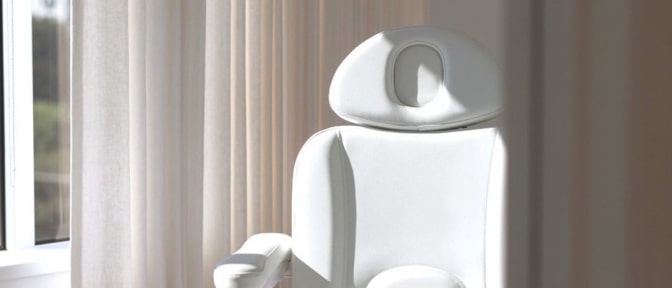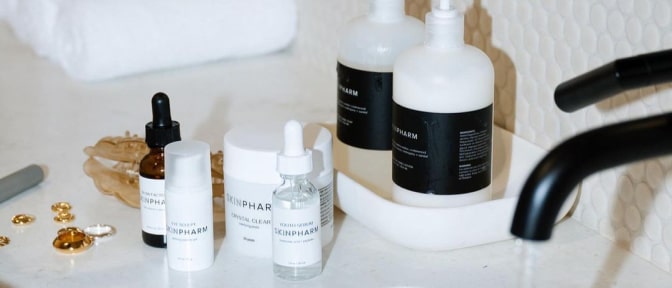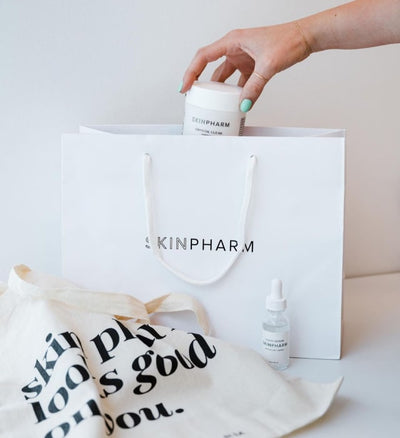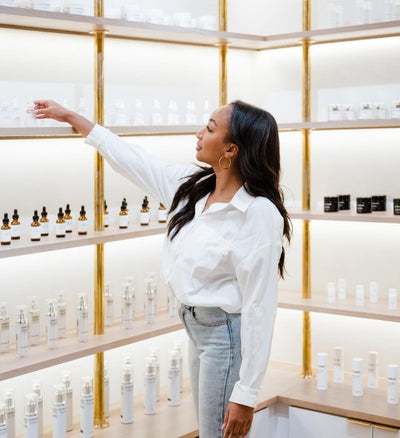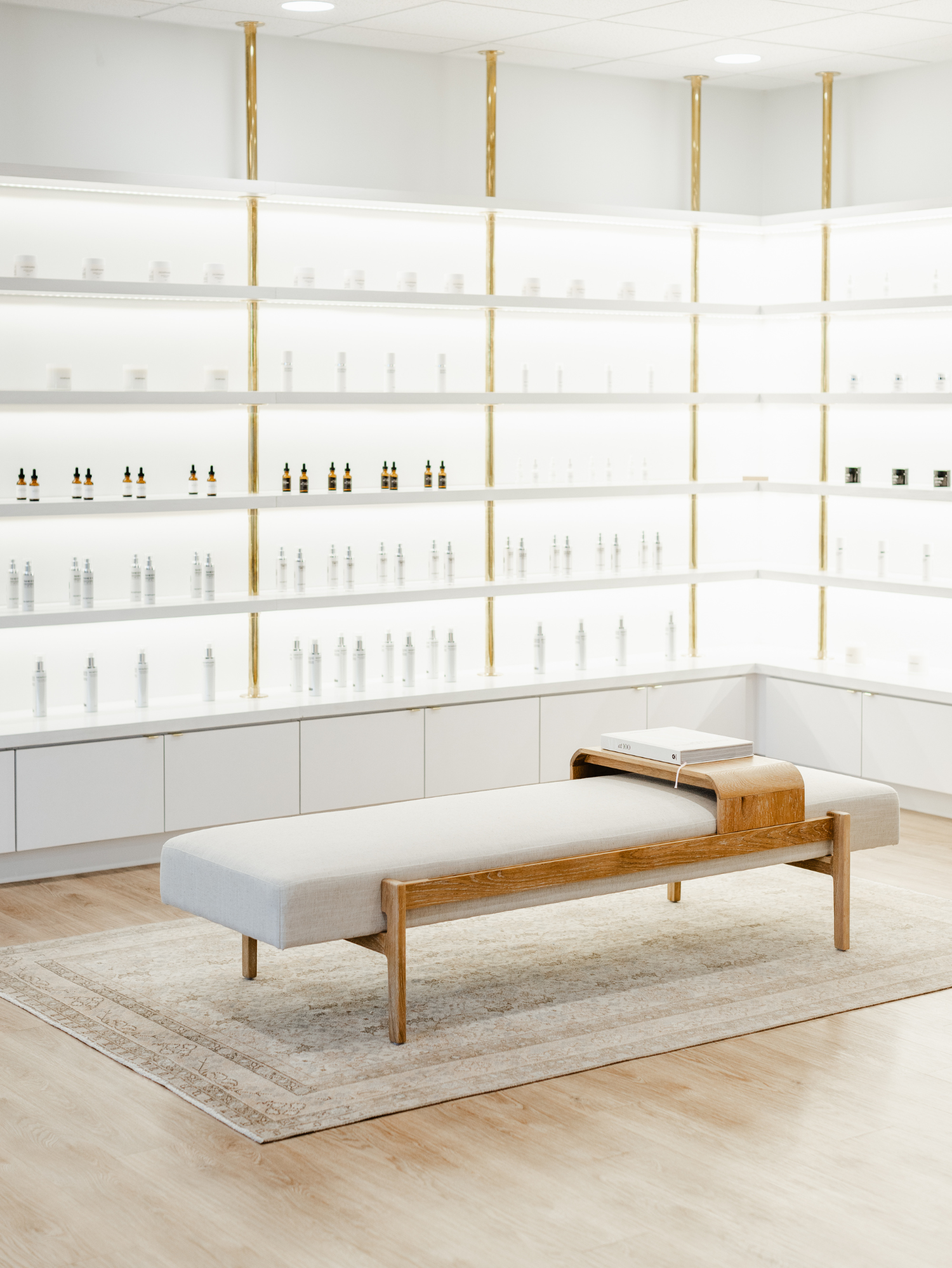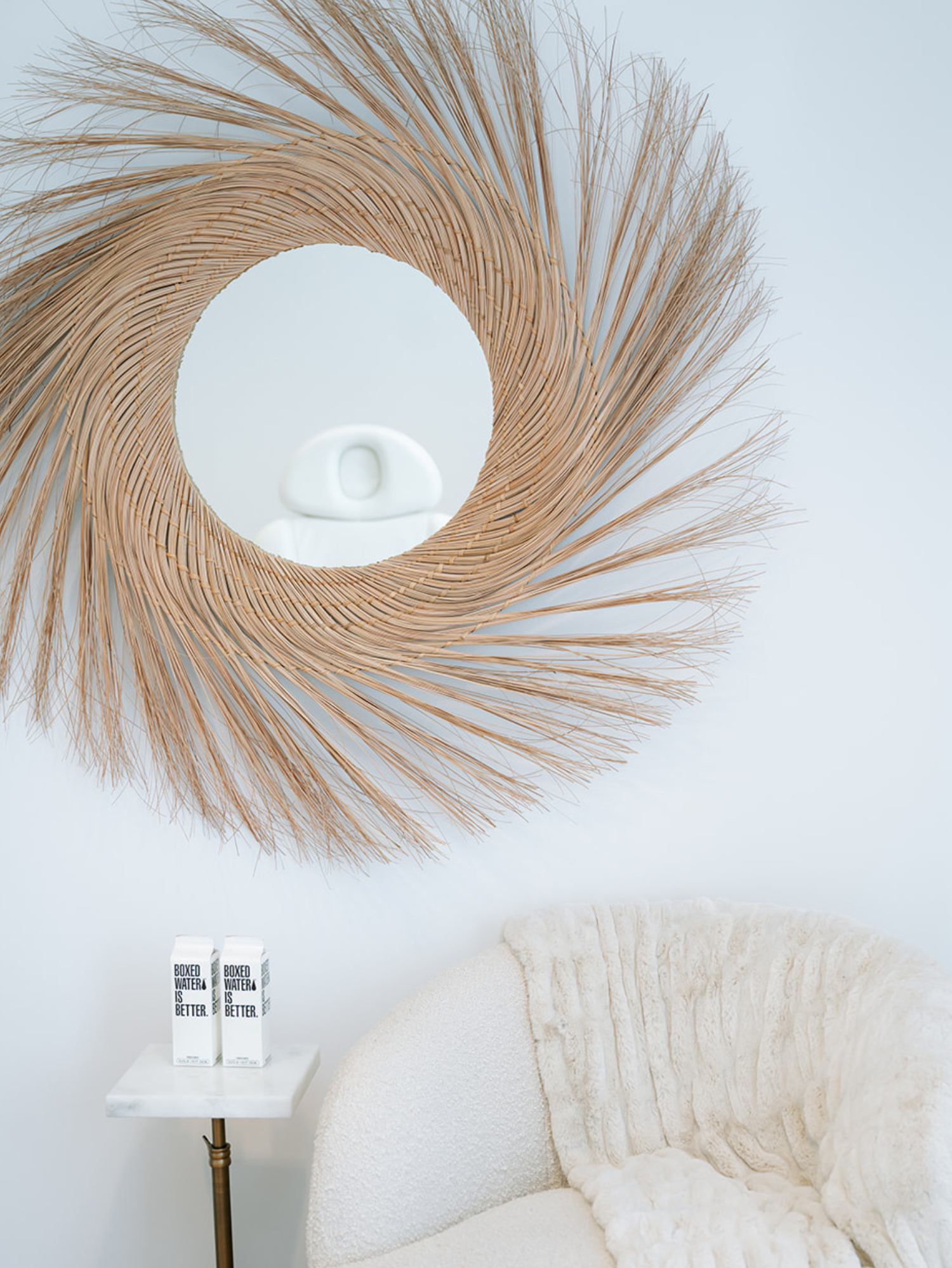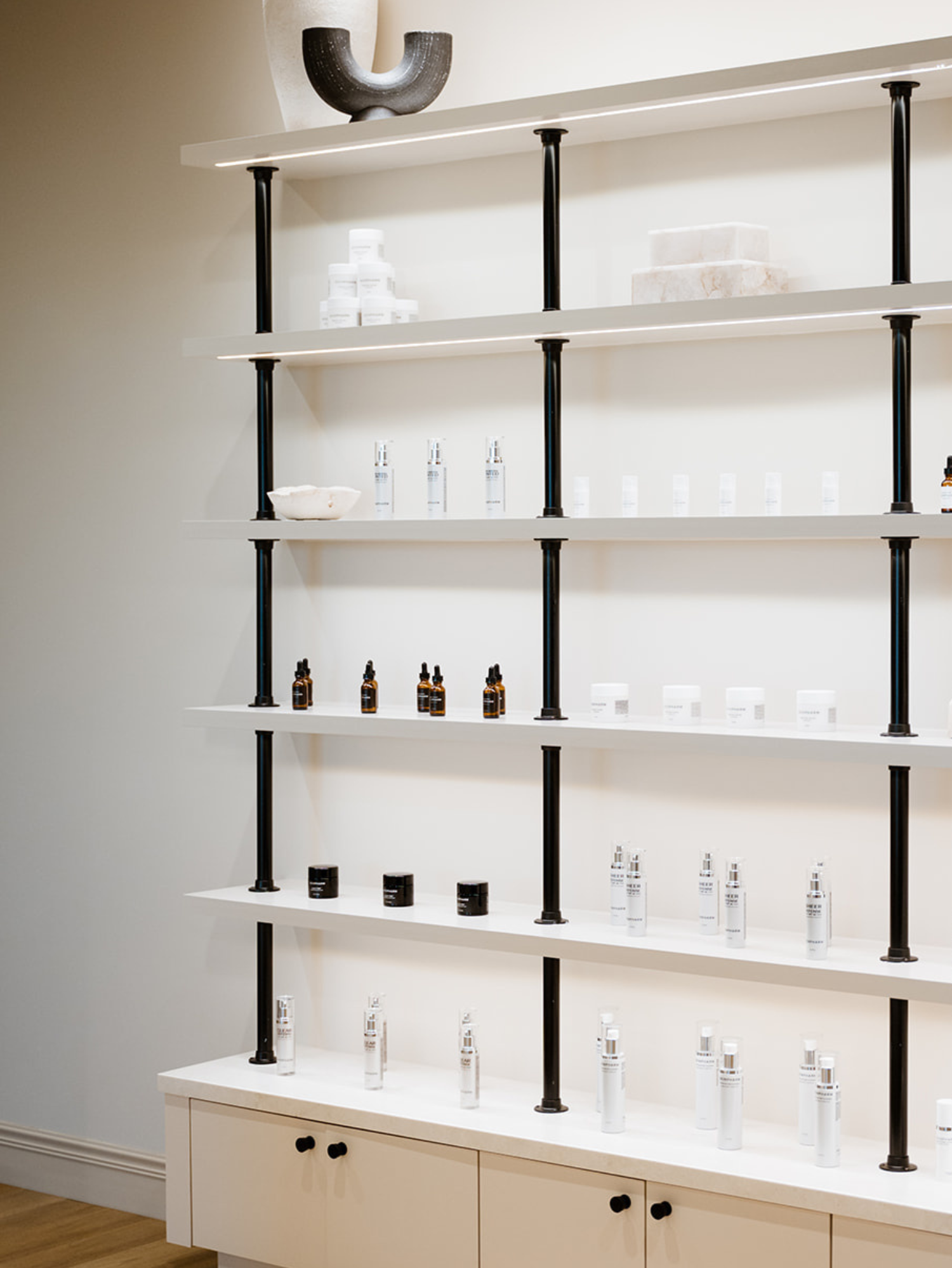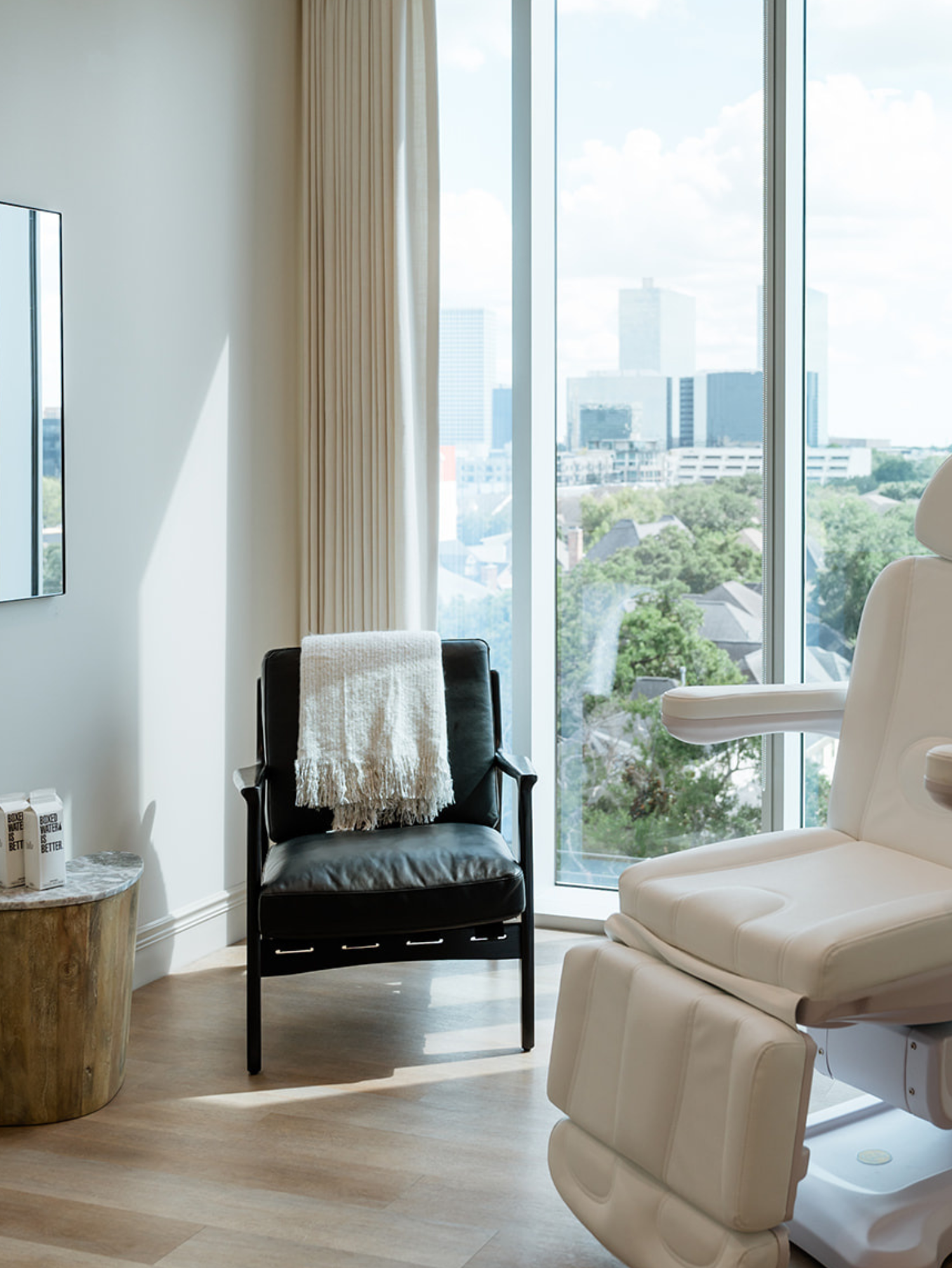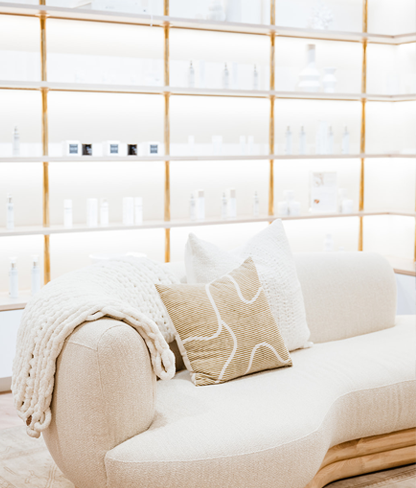Shop skin care
Clinics
VISIT OUR 9 CLINICS →
HOURS
Monday – Friday
9:30a – 5:30p
Using Glycolic Acid + Retinol Together

Unless you’re a skin care expert, it can be tricky to know which ingredients pair together and which may be working against each other – and your skin care goals.
When you find effective skin care ingredients that give you results, it makes sense to want to double them up so that you can achieve twice the benefits, right? Unfortunately, that is not always the case.
But we want to help with that!
The skin experts at Skin Pharm want you to have as much information as possible so that you can make the most informed decisions about your skin care routine.
With that in mind, let’s take a closer look at whether or not glycolic acid and retinol pair together and what benefits you might expect from them.
Glycolic acid basics
Knowing whether glycolic acid and retinol pair together starts with knowing how each ingredient works separately.
Glycolic acid is classified as an alpha-hydroxy acid (or AHA). This is a group of skin care ingredients known for their ability to exfoliate the skin, removing the dead skin cells and other dirt and debris from the top level of the skin.
AHAs are water-soluble, meaning that they are more easily able to dissolve in water. Glycolic acid is actually found in nature, specifically in sugar cane.
Although glycolic acid may be found in something sweet, its benefits are anything but mild. This powerhouse can be found in all kinds of different skin care products, from cleansers to moisturizers and everything in between.
Glycolic acid is best known, like all of the AHAs, for its power as an exfoliant. It has the ability to remove dead skin cells, leaving the top layer of skin clean and unobstructed.
Not to mention, without stripping away the natural oils it needs to help maintain its moisture barrier. It’s a product that is strong but effective, but works only on the very top layer of the skin and doesn’t go any deeper.
Retinol basics
Retinol is another incredible exfoliant with the ability to change your skin fairly significantly, especially if you know how to use it. The ingredient is the slightly lower concentrated version of retinoids, which are themselves a derivative of vitamin A.
When it comes to retinol, there are many different concentrations and formulations on the market. It’s been studied for decades and has proven to be effective in a wide variety of different contexts such as natural aging, sun damage, hyperpigmentation, fine lines, wrinkles and more.
The way it works is by getting deep into the pores and triggering the cells to speed up how quickly they are able to turn over. While it normally takes around 30 days for your skin cells to complete the turnover process, using retinol can make the process go much quicker.
That also triggers the skin to boost its collagen production, which can be a major help for so many issues. That’s part of why it has been considered the “gold standard” in the dermatology world.
Glycolic acid vs. retinol: which is best?
Looking at both exfoliants at face level can make it tricky to decide which one is best for you. Both provide similar benefits, but is one better than the other?
There are a few different considerations to take into account when you’re deciding which of the two ingredients to add to your routine. Those factors are your age, your specific skin type (normal, combination, dry, sensitive, oily, etc.) and any skin conditions that you may be dealing with, like acne or eczema.
If you’re looking for a great retinol-based product to add to your skin care routine, look no further than Skin Pharm’s Night Watch serum. It is formulated with 0.2% pure retinol, which can help to resurface your skin, reducing fine lines and wrinkles and decreasing the visibility of the pore size.
Along with vitamin C, a powerful antioxidant, it works to take the skin and make it the best it can. If you haven’t started using retinol by your 30s, you’ll want to start as soon as you can. In fact, glycolic acid can easily be incorporated starting in your 20s.
Instead of a serum, glycolic acid can function best as a toner. That way, you are able to add it to your face and wipe it gently off with a cotton pad. This sweeps away the dead skin cells, leaving your skin not only brighter but also more open to accept other skin care products.
Can you use glycolic acid and retinol together?
Now, the question that you’re all wondering about is… can you use glycolic acid and retinol together? We know how amazing they both are separately, but are they also a good tag team?
The good news is that yes, you can use them together.
However, you need to make sure that you know the right way to combine them so that they boost your skin instead of taking away from it.
Here are a few of our favorite tips and tricks to help you make the most of both of these products:
Start mild, especially with retinol. Don’t look for the highest percentage in an attempt to speed up your skin transformation, because it may actually damage the skin instead. Look for lower doses so that you can ease yourself into the products and bump them up once your skin has adjusted.
Don’t use glycolic acid and retinol at the same time in your routine. Start by introducing one of them and use it consistently for a week, then switch to the other for a week. You may want to take additional time if you know you have sensitive skin. Once you’re confident that your skin has gotten adjusted, you can begin to alternate them on a nightly basis. You’ll never want to use them both on the same night.
Always listen to your skin. While some adjustment is normal, including things like flaking, peeling and redness, if those side effects get too intense it’s a sign that you need to back off for a while and let your skin heal.
How you can help soothe your skin
Even if you ease into using glycolic acid and retinol, you’ll likely still experience at least some of the side effects associated with one or the other (or both). When that happens, having a way that you know you can go to soothe your skin can be the difference between healing the skin quickly or allowing it to continue to be damaged.
The first rule of using either skin care product – and especially if you’re using both together – it’s essential to make sure to use a moisturizer.
While both products are essential for helping to remove the dead skin cells on the surface of the skin, they can also strip away some of the essential oils that are needed to form the skin barrier (or moisture barrier).
Using a moisturizer can help you to build that barrier back up, protecting your skin from a lot of the damage that can happen when it is unable to function at its strongest. You’ll also want to make sure that each ingredient in your skin care routine works to boost the others, instead of taking away from them.
In addition, it’s absolutely essential to include the right sunscreen while you are using these ingredients. Both of them are prone to increase the sensitivity of your skin, which leaves it even more vulnerable to ultraviolet radiation from the sun.
Use a quality sunscreen that provides broad-spectrum protection (against both UVA and UVB rays), has at least SPF 30 and is able to withstand the water. Keep in mind that there is no such thing as waterproof, just water-resistant.
In conclusion...
Can you use glycolic acid and retinol together? Yes, as long as you follow our tips for making the best out of combining them safely.
Like focusing on having ingredients that help to soothe the skin and making sure that you don’t use multiple exfoliants or too strong of ingredients together, you can allow your skin to be able to heal itself as it rebuilds.
Incorporating Skin Pharm products into your routine can help you reach your goals. Let us help you reveal your best, brightest, most youthful-looking skin yet!
SOURCES:
Improvement of naturally aged skin with vitamin A (retinol) | National Institutes of Health
The skin: an indispensable barrier - Proksch - 2008 | Experimental Dermatology
How to decode sunscreen labels | AAD